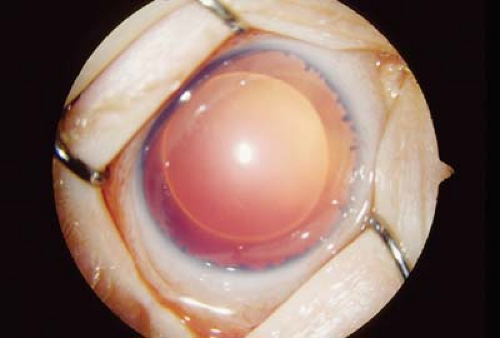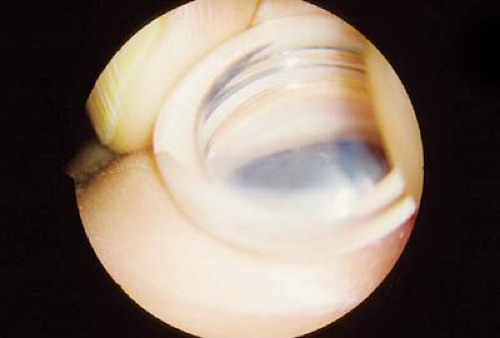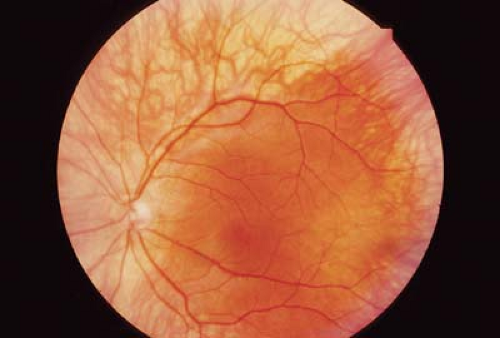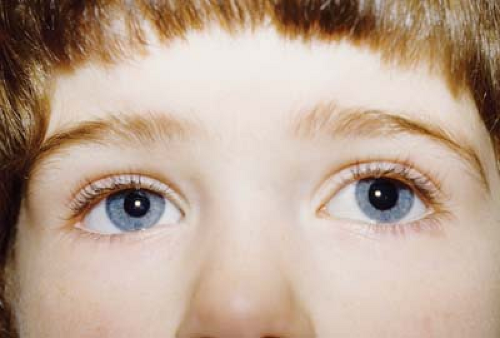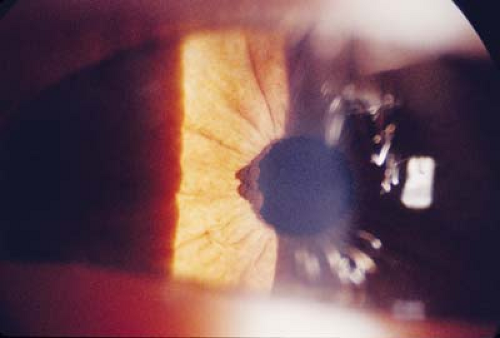Iris and Pupils
Alex V. Levin
Thomas W. Wilson
J. Raymond Buncic
David Rootman
The iris is formed during ocular development by an extension of the optic vesicle (neuroectoderm) forward as the posterior pigmented and nonpigmented iris epithelium, and an influx of neural crest cells forming the iris stroma. The iris sphincter and dilator muscles differentiate from the epithelial layers. Mesoderm contributes the endothelial lining of the vessels.
Abnormalities of embryogenesis can lead to iris anomalies including coloboma, persistent pupillary membranes, aniridia, and Axenfeld-Reiger syndrome. Iris findings can often give clues to underlying systemic diseases including Down syndrome (Brushfield spots), neurofibromatosis type 1 (Lisch nodules), Williams syndrome (stellate iris), and Hirschsprung syndrome (sector iris heterochromia). Abnormalities of the iris are also associated with other ocular abnormalities in diseases such as aniridia, albinism, and coloboma. Iris abnormalities can be the first clues of an underlying systemic disease or genetic disorder.
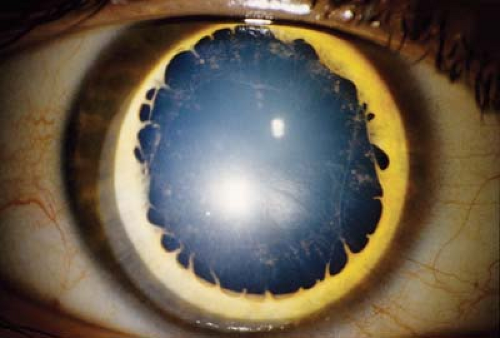 Figure 6.4 Gillespie Syndrome Gillespie syndrome is the association of aniridia and cerebellar ataxia and mental retardation. Aniridia associated with Gillespie syndrome is not caused by mutations of the PAX6 gene, and is therefore not associated with Wilms syndrome. The disorder is autosomal recessive. Note the typical scalloped pupil margin and more robust iris stump as compared to classic aniridia (Fig. 6.1). |
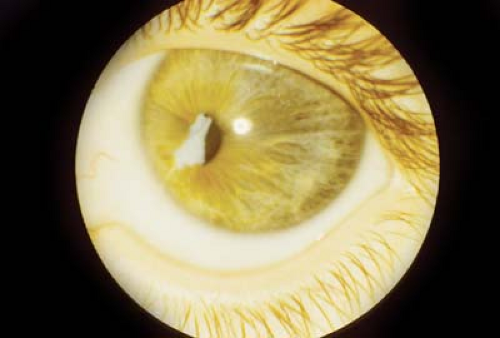 Figure 6.5 Congenital Iris-Lens- Pupillary Membrane Syndrome This photograph demonstrates secondary congenital miosis from a traction band extending across the borders of the pupil. White fibrous material seen centrally represents a remnant of the tunica vasculosa lentis. This form of persistent fetal vasculature (Chapter 7: Lens, Fig. 7.2) is characterized by corectopia and a high risk for glaucoma. The membrane may also extend behind the iris. Surgical pupilloplasty would be necessary in cases where the visual axis is significantly obstructed. |
 Figure 6.8 Congenital Iris Ectropion Uvea Congenital ectropion uvea is an abnormal migration of posterior pigment epithelial into the anterior iris surface. The patient will often present with concerns regarding anisocoria or iris pigmentation. Clinical examination shows an irregular pigmented mass on the anterior surface of the iris with distortion of the pupil and corectopia. Secondary glaucoma will commonly present, requiring surgical treatment. The disorder is almost always unilateral and nonheritable. Histology shows a residual contractile cellular lining attached to the leading edge of the ectropion and possibly covering the trabecular meshwork.
Stay updated, free articles. Join our Telegram channel
Full access? Get Clinical Tree
 Get Clinical Tree app for offline access
Get Clinical Tree app for offline access

|
